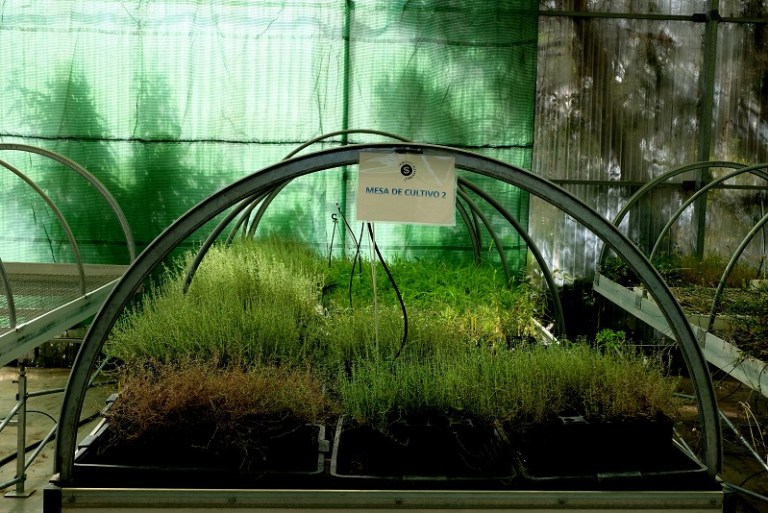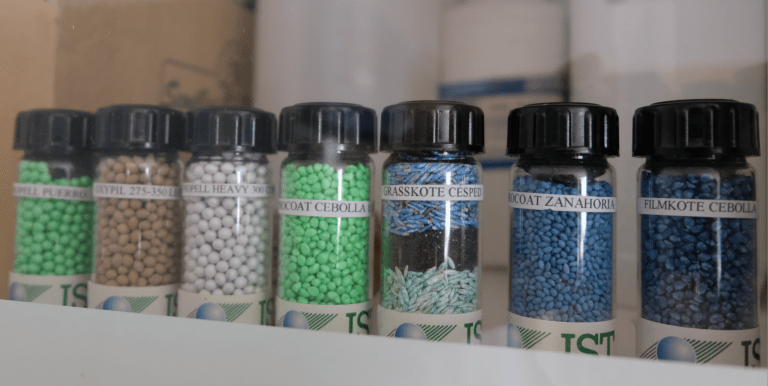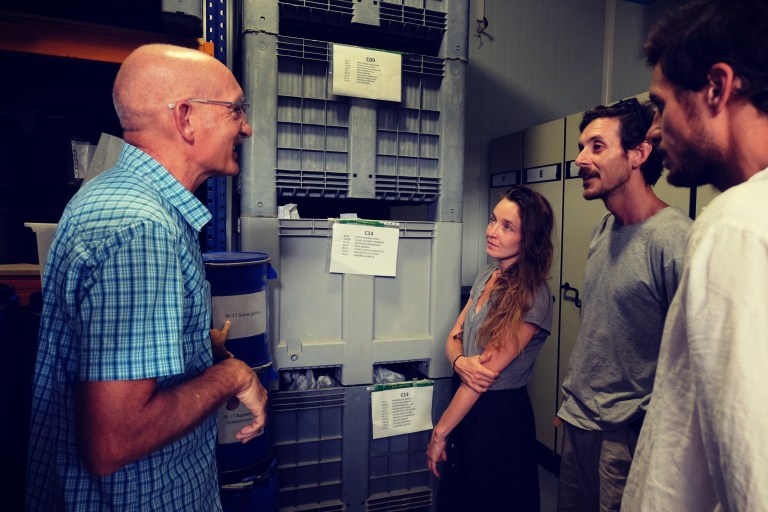Drylands Management, Organic Gardening
If you are interested in seeds conservation and wild plants, this post is probably for you.
An essential part of our drylands department is the regeneration of the local vegetation, through the collection and reproduction of wild seeds. We have a small but precious seed bank where we store seeds harvested in the area, so that we can sow them in the following planting season. I have been looking out for initiatives, companies or seed banks that could give us valuable inputs.
Last week we finally managed to reach Cordoba and meet Candido Galvez from Semillas Silvestres (Wild Seeds), a pretty unique company. Candido Galvez started ”Semillas Silvestres” 25 years ago, with the goal of producing native seeds and improving seed technology. Him and his 7 people team are working on the reproduction of trees, shrubs and mainly herbaceous species.
A crucial point is understanding what do they intend as native seeds. Native here is synonym of autochthonous. ”Semillas Silvestres” doesn’t work with forestry species, neither with endangered species. They look mainly for neglected species, species with an unknown use (until now), but that are beneficial for biodiversity and the sustainability of agroecological systems.

Why conserving and reproducing wild seeds?
Candido and his team are hunting for the most interesting native species which could serve purposes of ecological restoration, landscaping, or agroecosystem sustainability. They have participated in multiple international and European research projects, lately focusing on the use of native species for soil erosion control in olive plantations (such as CUVrEN Olivar).
In order to select relevant species, ”Semillas Silvestres” uses a matrix, which matches the native species traits and the needs of the crops they will be working with, or the needs of the growers, depending on the situations. Some traits are extremely important, such as seed replicability: are the seeds I want to work with easy to reproduce? At what cost? Germination rates also need to be taken into account. I need to pick species which can be easily germinated, or again, easily enough, and at an acceptable cost. Also, can I actually conserve my seeds for longer periods? Some seeds, if dried, do not survive (recalcitrantseeds, as opposed to orthodox). This makes their conservation impossible. Finally, seeds with very low dormancy are also avoided. A dormant seed is like a ‘sleeping’ seed, waiting for favorable environmental conditions to sprout. Seeds with very low dormancy can be a very big problem for farmers as their germination cannot be controlled.

A seed journey
The seeds you buy from ”Semillas Silvestres” have actually not been collected in the wild. Candido and his team do not want to harvest everything from nature. This is because they want to protect the wild population, be more efficient in their production, and be able to implement technologies that couldn’t be used otherwise.
So they only collect the ‘parents’ seeds in the wild. In the harvesting process there is a clear difference between native seeds and commercial food crops. With native seeds there’s no such thing as selection, as the goal is almost the opposite: provide as much variety as possible. There are protocols followed in order to minimize the seeds selection, and to ensure that the sample collected represent the widest variety of characteristics of each species. The ideal situation would be a representation of all the variability that takes place in wilderness, in order to ensure larger success for the native species when grown in different contexts. For example when planting wild seeds for ground cover, the needs of each olive plantation are different: soils, rainfall, climate. That’s why genetic variety is an essential component.
The ‘parents’ seeds are reproduced in the plots of ”Semillas Silvestres” for a few years, until they have enough seeds to bring their product to the market. These plots are called Seed Production Areas (SPAs), a concept spreading all over the world, with the goal of sustaining the natural production of wild seeds, so that we can rely on a higher supply of these precious species, without actually affecting their natural environment. In the SPAs more efficient technologies of seed harvesting can be applied, to ensure larger production. Interestingly enough, seeds grown here are not organically certified, as an organic production is not cost-effective.
The harvested seeds are then dried and cleaned. Humidity is the first cause of viability loss, that’s why the drying process is one of the most important. We then move into the quality control room. Here viability, germination and purity of seed samples are evaluated. Viability basically tells us whether a seed is alive or not. A seed can be dormant but still viable, so still capable of germinating under the right conditions. This is why viability is in this case more important than germination rate.
Our journey ends in the storage rooms, with a pleasant smell of dry grass. Boxes and crates full of seeds ready to be shipped out fill up the walls. A great tip from Candido: as a general rule for basic seeds conservation, he advises us to always check temperature and humidity. Their sum should not be higher than 60. If you want to conserve your seeds properly, keep your moisture levels down, that’s easier and more cost effective than lowering temperature.

If you want to find more information about wild seeds conservation, give a look at the European Native Seeds Conservation Network (ENSCONET) website, where you can find harvesting and conservation manuals.
And now, back to our seedbank!
